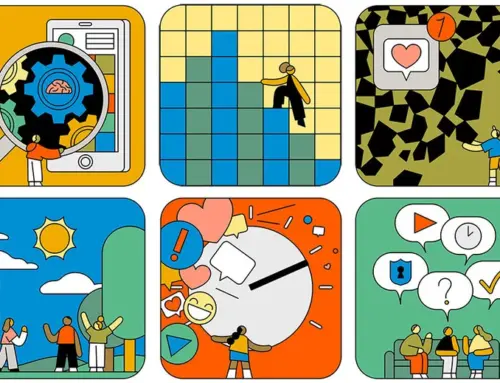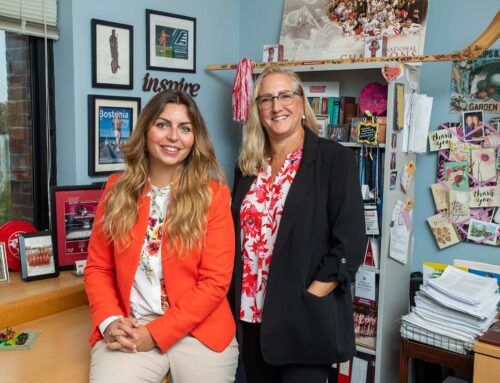This article was originally featured on Mashable
Netflix’s new film To the Bone tells two stories.
The first one, about the central character’s near-fatal struggle with anorexia, is what the filmmaker intended to share with her audience.
The second story is about the missed opportunities, omissions, and tropes that remind a skeptical viewer just how much Hollywood needs to rethink the way it portrays eating disorders in film and television.
That might seem like a harsh judgment of To the Bone, a semi-autobiographical account from TV veteran Marti Noxon, the film’s writer and director. For years, she pitched the idea to producers and heard the subject matter was too niche for a broad audience. She labored to bring the film to life with good intentions, and her efforts have sparked a high-profile conversation about eating disorders.
And yet the personal story she so urgently wanted to tell is the one that’s been told for decades: a young, frighteningly thin white woman struggles with anorexia and has the financial resources to try several different types of therapy and treatment. The woman’s journey is illustrated with the images we know so well — a protruding and bruised spine, an emaciated face, hauntingly frail limbs.
Last month, advocates and survivors in the eating disorder community publicly worried that the film’s trailer might glamorize anorexia or include excessive triggering imagery. The National Eating Disorders Association (NEDA) recommends against showing “dangerous thinness” because of the way that imagery can affect people experiencing or recovering from an eating disorder.
“What was in the trailer, there’s more of it in the film,” said Claire Mysko, CEO of NEDA. She’s glad Netflix included a warning about those depictions. But she’s also disappointed that the movie doesn’t point viewers to resources for information or help, something NEDA lobbied Netflix to do when the trailer dropped last month.
“Making it easy for people to access help would have been the responsible thing to do here,” she said.
If you couldn’t tell already, this isn’t just any ordinary movie — the expectations and stakes are much higher than any casual viewer could imagine.
That’s why its scenes, plot points, and imagery are being subjected to such scrutiny. It may be just one woman’s experience, but it also has the unusual power to dramatically shape public opinion of what eating disorders look like. Pop culture rarely portrays them well, or at all.
Prior to the film’s debut, Melissa A. Fabello, a survivor, writer, and researcher who studies body positivity and eating disorders, wrote about the need for more stories that reflect diverse experiences: “My story — and the collective story of those like me — has become the only story.”
Screenwriters have increasingly drawn on the singular narrative about eating disorders since the 1980s, when they became a topic of public conversation following the anorexia-related death of musician Karen Carpenter. In the 1990s, books like Reviving Ophelia: Saving the Selves of Adolescent Girls and The Beauty Myth: How Images of Beauty Are Used Against Women, gave white women, in particular, a language to talk about media, pop culture, body image, and eating disorders, but that conversation wasn’t overly inclusive of contrasting experiences.
Some, including Fabello, were hopeful that To the Bone would fundamentally change that equation by presenting a variety of experiences. The film’s producers and supporters suggested that much anyway, urging skeptics to wait and judge the movie as a whole.
In reality, the supporting characters offer lip service to the range of experiences beyond the stereotype. A plus-size black woman binge eats. A young man, who is a dancer, has made progress in his recovery from anorexia. At least one patient has bulimia. What’s missing is any real effort to develop those characters, with the exception of the protagonist Ellen’s male love interest.
“It’s definitely an interesting film, but it doesn’t do anything to challenge the genre,” Fabello said in an interview.
Dr. Stuart Koman, president and CEO of Walden Behavioral Care, a health organization specializing in the treatment of eating disorders, said he could imagine some survivors watching the film and feeling understood, but personally can’t recommend it to patients,
survivors, or their families.
“I actually wanted to like the film or find redeeming qualities, but in the end, certainly in terms of patients, I don’t see much of this that’s going to be helpful for a person in recovery,” Koman said.
The film, he noted, is filled with lost opportunities to dispel myths or provide better context for why people develop eating disorders in the first place, and what happens in recovery.
Ellen, for example, hints throughout To the Bone that she doesn’t really understand the roots of her disorder. Even a line or two from her doctor about the complex entanglements of genetic, biological, behavioral, psychological, and social factors could’ve made her illness seem less about ennui and more about a health condition that researchers can’t yet fully explain.
When group therapy with Ellen’s family members occurs, Koman said her doctor could’ve talked briefly about the challenge of making those sessions productive. Instead, he swears to never hold another one again, something that deeply worries Koman. A high-quality provider who knows the essential role family support and therapy can play in recovery would work harder to turn that initial failure into a success.
For his part, Koman appreciates that To the Bone is just one woman’s story, but can’t ignore the impact it may have on impressionable viewers and their families, who may already feel considerable guilt about their loved one’s illness.
Mysko noticed another wasted chance, in a surprising storyline about Ellen’s Tumblr “thinspiration” art being linked to a young woman’s suicide. While that art could’ve led to conversations about the complexities of Ellen’s illness and given the filmmakers a way to express her anguish beyond her stark physical features, the drawings go undiscussed.
“When you’re relying on the emaciated, bruised body, it can’t get at all the internal suffering that’s going on,” Mysko said.
Ellen’s conversations with her therapist might have solved that problem, but those weren’t revelatory. The film, in fact, seems intent on insisting that talk therapy doesn’t really help, that it’s sentimental or cheesy. But there would’ve been tremendous power in portraying an effective counseling session that gave Ellen cognitive or behavioral tools to deal with the symptoms and effects of her disorder. After all, that’s what great mental health treatment is all about.
It’s easy to trace many of the film’s missteps back to the difficulty of portraying the interior nature of mental illness for a medium that’s inherently visual.
“How do you make the reality of a struggle like this translate to something that’s compelling on film?” Mysko said. “I really think we should keep trying. I believe that, but it is tricky.”
If To the Bone can serve as a call to arms — in addition to educating the public about eating disorders — it should be for mainstream storytellers who want to craft sophisticated, inclusive narratives about mental illness. They should start by focusing on what life is like for people of color, people of size, and people who can’t afford residential treatment. Their mission should be finding ways to express emotional and psychological turmoil without relying on tired visual cues or falling back on moments of crisis followed by epiphany, as the final stretch of To the Bone does.
Life with mental illness is much more boring than Hollywood would have us believe. And it’s something millions of people share in common, even if only one story has become the norm. When we start breaking free from the burdensome constraints of cliché-driven storytelling, then we can truly make important progress toward defeating the stigma and stereotypes that keep people from getting the support and treatment they need.






